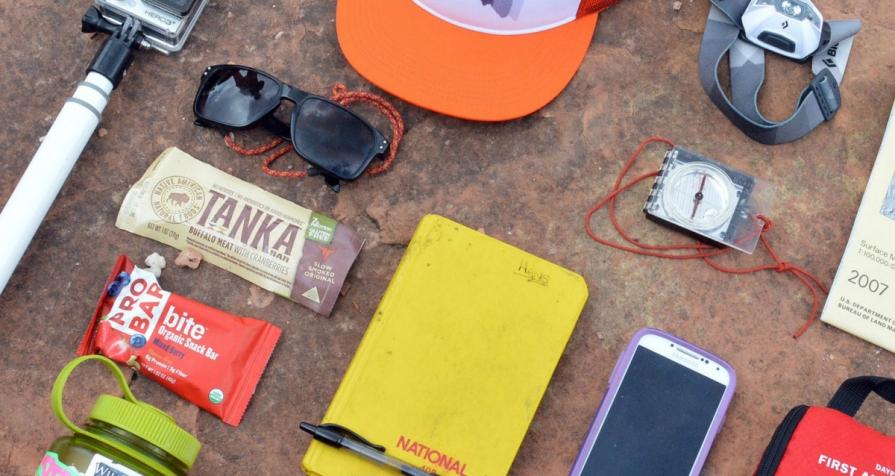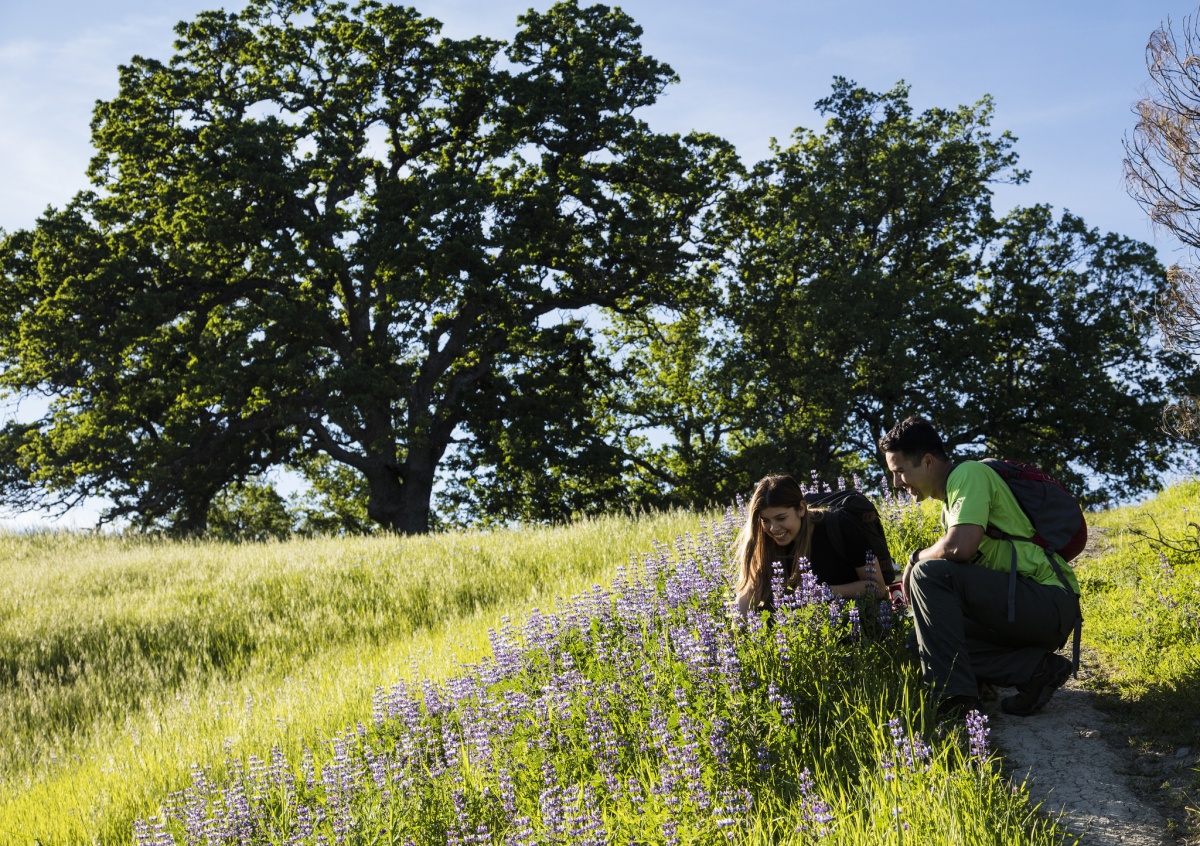
Know Before You Go
The BLM welcomes you to explore, enjoy, and make positive memories from your outdoor experiences on America’s public lands and waters. Please remember these are wide-open spaces and wildlands. Plan ahead and be aware of potential hazards. It is everyone’s responsibility to take steps necessary to minimize the chances of becoming lost or injured on public lands.
Below you'll find safety tips and other key advice for planning your trip. Check with the closest BLM office for more information about local conditions, regulations, and recreation resources. Outdoor Ethics
Fire Safety
Weather Matters: Fire danger in the forest shifts with the weather. Drought, heat, and wind can easily dry out fuel, making fires easier to start and harder to control.
Be Proactive: Check with the Bureau of Land Management for current campfire restrictions and permit requirements before your visit. Regulations vary by area and can change due to weather conditions and seasons. Trails may be closed unexpectedly due to fire hazards.
If You Build a Campfire:
- Clear a 5-foot radius of burnable materials.
- Keep campsites away from overhanging branches and dry areas.
- Use existing fire rings or a fire pan to prevent scars.
- Keep the fire small and never leave it unattended.
- Don't burn trash—pack it out instead.
- Fully extinguish your fire with water, stirring to cool down all materials. Make sure everything is out before you leave.
Protect Our Forests! Stay safe and help prevent human-caused fires.
River Safety
Tell someone your plan: where you're going, when you’ll be back, and who to call if you don’t return.
Never boat alone. Match your skills to the river and conditions.
Always wear a properly fitted, Coast Guard-approved life jacket (Type III–V).
Wear a helmet: Kayakers and canoeists always; rafters in Class IV+.
Dress smart: Wear protective footwear and river-appropriate clothing. Use wetsuits and booties in cold or Class V water.
Know your rescue limits—yours and your group's. Learn how to swim for an eddy.
Watch for hazards: undercuts, holes, sieves, snags, and wrap rocks. If you can't see a safe line—scout or portage.
Only one boat in a rapid at a time to avoid pileups.
Be weather-wise: Cold = hypothermia risk. Hot = dehydration or heat exhaustion. Some meds make this worse.
Carry a first aid kit. Know CPR. Be ready for rattlesnakes and poison oak.
Wilderness rivers are risky—help may be far away. Plan accordingly.
Stay sharp. Stay safe. Respect the river.
Cave Safety and Tips
Caving can be dangerous, especially if you lack experience or knowledge of basic caving principles. Please remember the following tips to stay safe and to help protect delicate cave environments:
- Tell Someone: Share your caving plans and expected return time.
- Light it Up: Bring three trusty light sources and extra batteries—better safe than sorry!
- Stick Together: Keep everyone in sight and sound; teamwork makes the dream work!
- Gear Up: Always wear a helmet and gloves for protection.
- Watch Your Step: Loose rocks can fall—stay alert!
- Know Your Limits: Only explore caves that match your skill level.
Leave No Trace:
- Pack in, pack out! Bring everything you take, including trash and waste.
- Respect delicate formations—don't touch or take anything.
Must-Have Gear:
- 3 light sources (secure one to your helmet!)
- Extra batteries
- Gloves
- Plenty of drinking water
- Trash and waste container
- Dress in layers
- Sturdy non-slip boots
Get ready for an unforgettable caving adventure—safely and responsibly!
Abandoned Mines
The desert is home to many abandoned mines, and they can be incredibly dangerous!
Key Advice: Stay out and stay alive!
People have fallen to their deaths, and there have been reports of entire vehicles and passengers plunging into mine shafts.
Remember, not all mines are walk-in—some are deep shafts that drop straight down. Stay smart and stay safe!
Flash Floods
Flash floods can strike anytime, but they’re most common in July, August, and September. Stay alert—conditions can change rapidly!
Stay Safe:
- Avoid narrow canyons and washes during storms.
- Be aware of weather changes and have escape routes ready.
- Watch for rising water levels and strong currents if hiking in streams.
- Know the terrain and remember that dry washes indicate past floods.
If flooding occurs, move to higher ground and wait it out. Always avoid camping in washes when storms are looming! Stay safe out there!
Summer Heat Safety
Summer temperatures can soar over 100°F, so keep cool and avoid heat-related issues:
- Hydrate: Drink at least 1 gallon (4 liters) of water daily—up to 8 quarts for strenuous activities at high elevations.
- Timing: Avoid hiking during the hottest part of the day.
- Dress Smart: Wear a hat, long sleeves, sunscreen, and sunglasses.
- Fuel Up: Eat well before your hike and pack snacks to replenish electrolytes.
Pro Tip: Drink frequently, even before thirst hits, and always treat your water! Stay safe and enjoy your adventure!
Bear Safety
Bear Safety 101
Stay safe and avoid bear encounters by following these essential tips:
Keep Your Distance
- Never Approach Bears: Respect their space, especially mothers with cubs. Use your zoom for photos!
- Avoid Trails: Don’t camp near trails that bears might use.
Make Noise
- Don’t Surprise a Bear: Sing, talk loudly, and hike in groups to let bears know you're around.
- Hike Smart: Stay visible and walk with the wind at your back.
Food Safety
- Don’t Feed Bears: Keep food secured and out of reach! Clean your camp, wash dishes, and store food in bear-resistant containers.
- Watch Your Waste: Burn or pack out all food waste.
If You See a Bear
- Stay Calm: If the bear hasn’t noticed you, back away slowly. If it sees you, stand your ground and speak softly.
- Group Together: Appear larger and be assertive if the bear approaches.
Never Run!
- Stand Your Ground: Bears can outrun you, and running triggers their chase instinct.
In Case of an Attack
- Play Dead (for defensive attacks): Lie still and flat if a bear charges unexpectedly or if it’s a mother protecting cubs.
- Fight Back (for food-seeking bears): Use anything on hand to defend yourself.
Remember: Bear deterrents like spray and firearms are tools, not substitutes for common sense. Stay alert and respect bear country!
Snake Safety
Stay alert in thick brush and rocky areas! Here’s how to keep safe from snakes:
- Use a Walking Stick: Check under brush and in crevices before stepping.
- Gear Up: Wear high-top boots or snake chaps for extra protection.
- Handle with Care: Be cautious when moving piles of logs or tarps.
Remember: Most bites happen accidentally—either by stepping on a snake or trying to kill one. About 20% of bites inject venom, so if bitten, get to a first aid clinic or hospital ASAP! Stay safe out there!
Hypothermia
Hypothermia is a serious condition caused by prolonged cold exposure, worsened by wetness, wind, exhaustion, and lack of food—even above freezing temperatures!
Watch for Symptoms: Hypothermia can sneak up on victims—they often don’t realize it’s happening. Look for early signs in your group.
How to Treat Hypothermia:
- Rewarm Actively: Get the person out of the wind and rain, and remove wet clothing.
- Find Heat: Move them to a warm spot—like a fire or inside a dry sleeping bag, or share body heat with another person.
- Warm Drinks: Offer warm beverages like herbal tea or soup. Avoid caffeine and alcohol!
Stay alert and keep your group safe!
Think Before You Drink -- Giardia
Only drink water from developed systems at recreation sites—open water sources can be contaminated!
Always Treat Your Water: Avoid giardiasis, an intestinal parasite that can make you feel awful for weeks!
Best Method: Boil your water for 5 minutes to ensure it's safe. Stay healthy on your adventures!
Poison Oak and Ivy
Poison oak and poison ivy are common, especially near water. Their oils can cause a nasty rash on contact, so it's essential to recognize them:
- Poison Oak: Can be a vine, shrub, or small tree with shiny, waxy leaves grouped in threes—either green or red.
- Poison Ivy: Also has 3 leaves and typically appears as a vine.
Stay Safe:
- Dress Wisely: Wear long pants and sleeves to protect your skin.
- Wash Up: If you come in contact, wash your skin and clothing immediately.
Relief: Use calamine lotion, Benadryl, or cortisone cream for rashes, and oral antihistamines can help too.
Important! The rash itself isn't contagious; it will only spread if the plant's oil is still on your skin. Once you clean it off, you won't spread it to others! Stay cautious and enjoy the outdoors!
Ticks
Ticks are pesky external parasites that feed on blood and can transmit diseases like Lyme disease and Rocky Mountain spotted fever.
Prevention Tips:
- Inspect Regularly: Check your clothing and skin for ticks, both attached and unattached.
- Remove Ticks Properly: Use narrow tweezers to grasp the tick close to the skin and pull it straight out—don’t crush it!
- Stay Safe: Avoid handling ticks with bare hands. Disinfect the bite area and wash your hands thoroughly.
Stay vigilant to keep ticks away and enjoy the great outdoors!
Cell Phone Coverage
While a cell phone may help in an emergency, do not rely on your cell phone. Cell coverage outside established towns may be poor or unavailable. Be prepared to follow other recommendations to ensure a safe trip.
Firewood & Forest Pests
Protect Our Trees!
Non-native insects and diseases threaten our forests, with invasive pests like the Asian longhorned beetle and emerald ash borer killing trees. These pests can hitch a ride in firewood long distances, leading to devastating infestations.
Important Tips:
- Don’t Transport Firewood: Leave firewood at home! Instead, buy local, heat-treated wood, or gather on-site where allowed.
- Stay Informed: Spreading firewood can violate laws and harm forests.
For more info, visit: Don't Move Firewood. Let’s keep our forests safe!
Boating & Aquatic Invasives
Protect Our Waters!
Non-native plants, mussels, fish, and microorganisms threaten our lakes and rivers. Recreational activities like boating and fishing can spread these invasive species, which often hide in equipment and water.
Key Steps to Prevent Spread:
- CLEAN: Remove all visible plants, animals, and mud from your gear before leaving.
- DRAIN: Empty motors, bilge, live wells, and other water containers.
- DRY: Let everything dry for at least five days or wipe it down before reuse.
- DISPOSE: Throw away unwanted bait and fish parts; never dump live fish into other waters.
For more info, visit: Stop Aquatic Hitchhikers. Let’s keep our waters safe!

